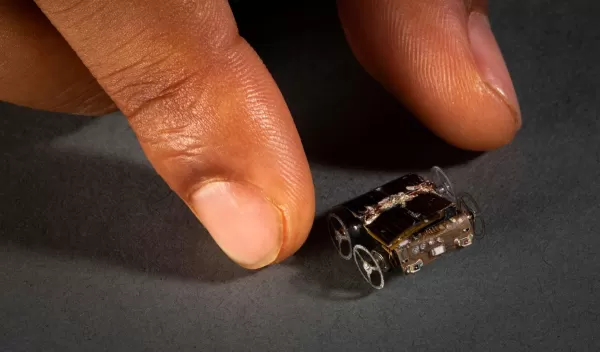
MilliMobile is a tiny, self-driving robot powered only by light and radio waves
Moving robots demands a lot of energy. Batteries, the typical power source, limit lifetime and raise environmental concerns. Researchers have explored various alternatives, but each has drawbacks: Insects roam; chargers limit range; lasers can burn people's eyes.
Researchers at the University of Washington have now created MilliMobile, a tiny, self-driving robot powered only by surrounding light or radio waves. Equipped with a solar panel-like energy harvester and four wheels, MilliMobile is about the size of a penny, weighs as much as a raisin and can move about 30 feet in an hour, even on a cloudy day. The robot can drive on surfaces such as concrete or packed soil and carry three times its own weight in equipment such as cameras or sensors. It uses a light sensor to move automatically toward light sources, so it can run indefinitely on harvested power.
The team presented its research at the 29th Annual International Conference On Mobile Computing And Networking, and the paper is published in the conference proceedings.
"We took inspiration from 'intermittent computing,' which breaks complex programs into small steps, so a device with very limited power can work incrementally, as energy is available," said co-lead author Kyle Johnson, a U.S. National Science Foundation Graduate Research Fellow. "We reduced the robot's size and weight, so it takes only a small amount of energy to move."
The team tested MilliMobile both indoors and outdoors, in environments such as parks, an indoor hydroponic farm and an office. Even in very low light situations — for instance, powered only by the lights under a kitchen counter — the robots are still able to inch along, though much slower. Running continuously, even at that pace, opens new abilities for a swarm of robots deployed in areas where other sensors have trouble generating nuanced data.
In the future, the researchers plan to add other sensors and improve data-sharing among swarms of these robots.
